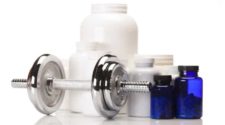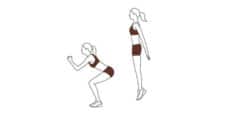The ketogenic (keto) diet has rapidly increased in popularity as many homes incorporate it into their lifestyle. One look at the many benefits that keto offers makes it easy to see why it’s so trendy.
The keto diet mechanism of action is simple. It restricts the intake of carbs but encourages the consumption of fat. Hence, the body, starved of glucose, is forced to burn the fat to provide fuel for the body. This process is referred to as ketosis.
How long does it take to get into ketosis?
Essentially, the timeframe varies from person to person. For some, 1 day is enough while others need 3 days to get into ketosis. For most, a period of 48 hours (or 2 days) should be enough time.
How to get into ketosis faster?
Below are a few things that should help get you into a state of ketosis faster and safer.
1. One way to hasten your transition into a state of ketosis is by drastically limiting your carb intake. Normally, to get into a state of ketosis, one should consume around 50 grams of net carbs per day.
However, there are some people who are likely to get into ketosis by only consuming 20 grams while others enter ketosis by consuming 190 grams of net carbs. It varies from person to person.
Although 0 grams of carbs per day might speed up the process of getting into ketosis, it might do more harm than good. Headache, confusion, disorientation, mental alteration, and faintness all for the sake of getting into ketosis less than 24 hours earlier? At least at the beginning, it’s not worth the risk.
2. If you consume too much protein, you stand the chance of not transitioning into ketosis. This is because some amino acids could convert to glucose and, hence, prompt the body to use it for energy instead of fat. This process is known as gluconeogenesis.
Therefore, we can conclude that the keto diet is not only carb restricted but also protein restricted.
The general recommendation is to consume around 0.8 grams of protein per kilogram or 0.36 grams per pound of body weight.
3. The fat to protein ratio in the first week should be 3:1. This helps encourage the body to use fat for energy production. Later, you can keep this ratio at 2:1.
4. The water loss due to glucose depletion can cause dehydration, headache, and fatigue. Make sure you drink enough water.
5. Prepare, plan, and buy appropriate foods for the first two weeks. Please note that it usually gets easier after the first two weeks.
6. The first two weeks are extremely crucial and difficult. Hence, it is important to be in an environment that you can control, like your home. This is essential since you are likely to experience strong sugar cravings and keto side effects. Most people give up in the first two weeks.
7. Notably, during the first week, you can drop weight very fast. Mostly, this is because you are losing water weight. This type of weight loss is induced by low carb intake. Carbs are known to encourage water retention in the body. Water loss could cause headaches and some other side effects. To reduce them, consume enough fat and sodium to maintain a proper electrolyte balance.







Leave a Reply